Growing Geraniums In Containers For More Blooms In Small Spaces
No matter how small your yard or window space, there’s a place for a potted geranium. Make sure yours last for longer with this guide to growing geraniums in containers
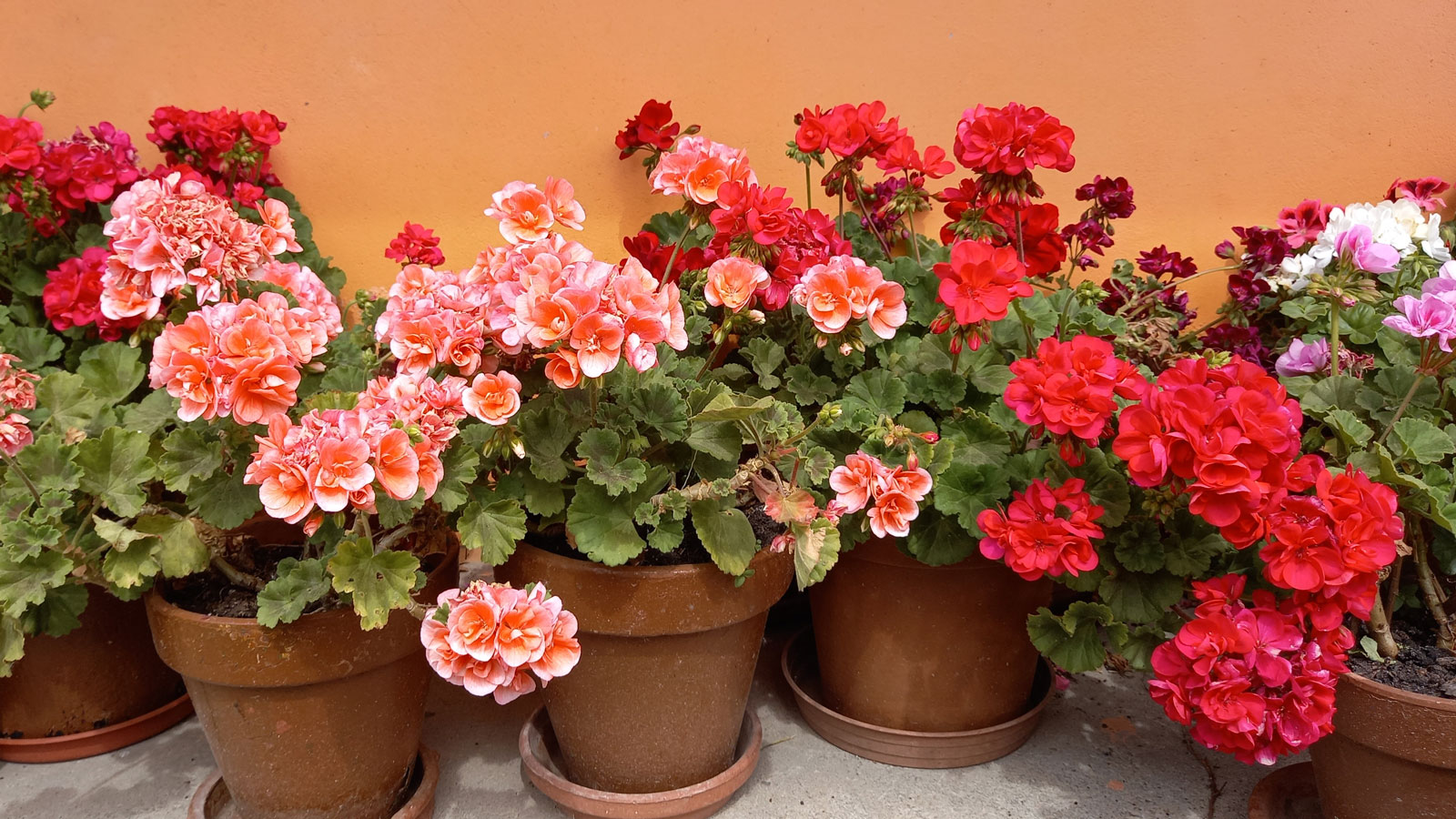

Just like peanut butter and chocolate, or cheese and crackers, there’s something about growing geraniums in containers that feels like the perfect partnership. That’s not to say that geranium care is necessarily more of a struggle when your plants are growing in the ground. It’s just that container gardening gives you added scope for filling even more spaces with perennial, zonal or scented geraniums. Switching up to pots also means you have more control over growing conditions. You can relocate geraniums through the year and overwinter perennial varieties, boosting their vitality and longevity.
When growing geraniums in the ground, you need to pay close and constant attention to fluctuations in temperature, keeping a watchful eye out during extended periods of heat and potential cold snaps. While perennial geraniums can cope in hardiness zones down to USDA zone 3, they are vulnerable to frosts. Bringing potted geraniums indoors adds flexibility and security to your geranium growing. What’s more, many flowering varieties prefer the compact conditions of a well-chosen pot, responding well to the restrictive nature of container growing. So here’s how to grow geraniums in pots which, like all the best partnerships, will flourish and delight for years to come.
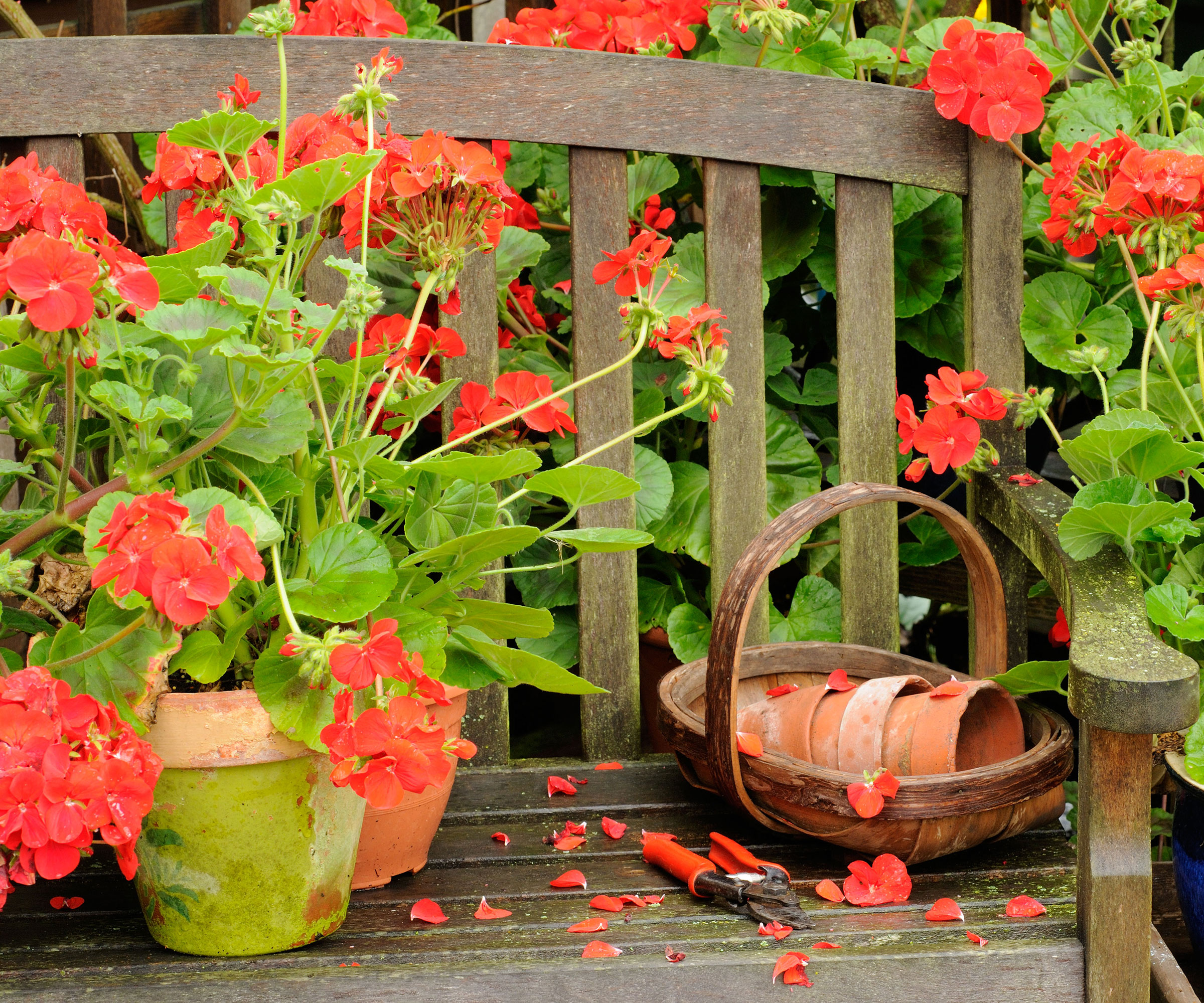
Selecting The Best Varieties When Growing Geraniums in Containers
When selecting container geraniums, geranium lovers face decisions regarding color, life span and often fragrance. In the simplest terms, there are annuals (broadly defined as pelargoniums) and perennial geraniums. But that doesn’t cover the scope and sensitivity of various carefully bred cultivars. Zonal geraniums (Pelargonium x hortorum) are technically pelargoniums but actually related to perennial geraniums. There are also ivy geraniums (Pelargonium peltatum), which can be grown as tender perennials. Zonal geraniums create profusions of easily identifiable floral color, while ivy types have a trailing habit.
Some ivy geraniums have been cross-bred with zonal geraniums to create calliope varieties which are more heat tolerant but only likely to survive the mildest winters. Others, like Martha Washington (or regal) geraniums, prefer cooler indoor growing. Your ability to eke a longer life out of certain geranium varieties might sometimes come down to the mildness of your region’s winters.
If you are after container geraniums as houseplants, some of the most satisfying are the scented geranium varieties (which again, are pelargoniums but can be grown as tender perennials in the right conditions). With intoxicating fragrances including chocolate, cinnamon, rose, lemon and mint, they are some of the most low-maintenance container options – as long as you give them the correct care regarding light, warmth and watering.
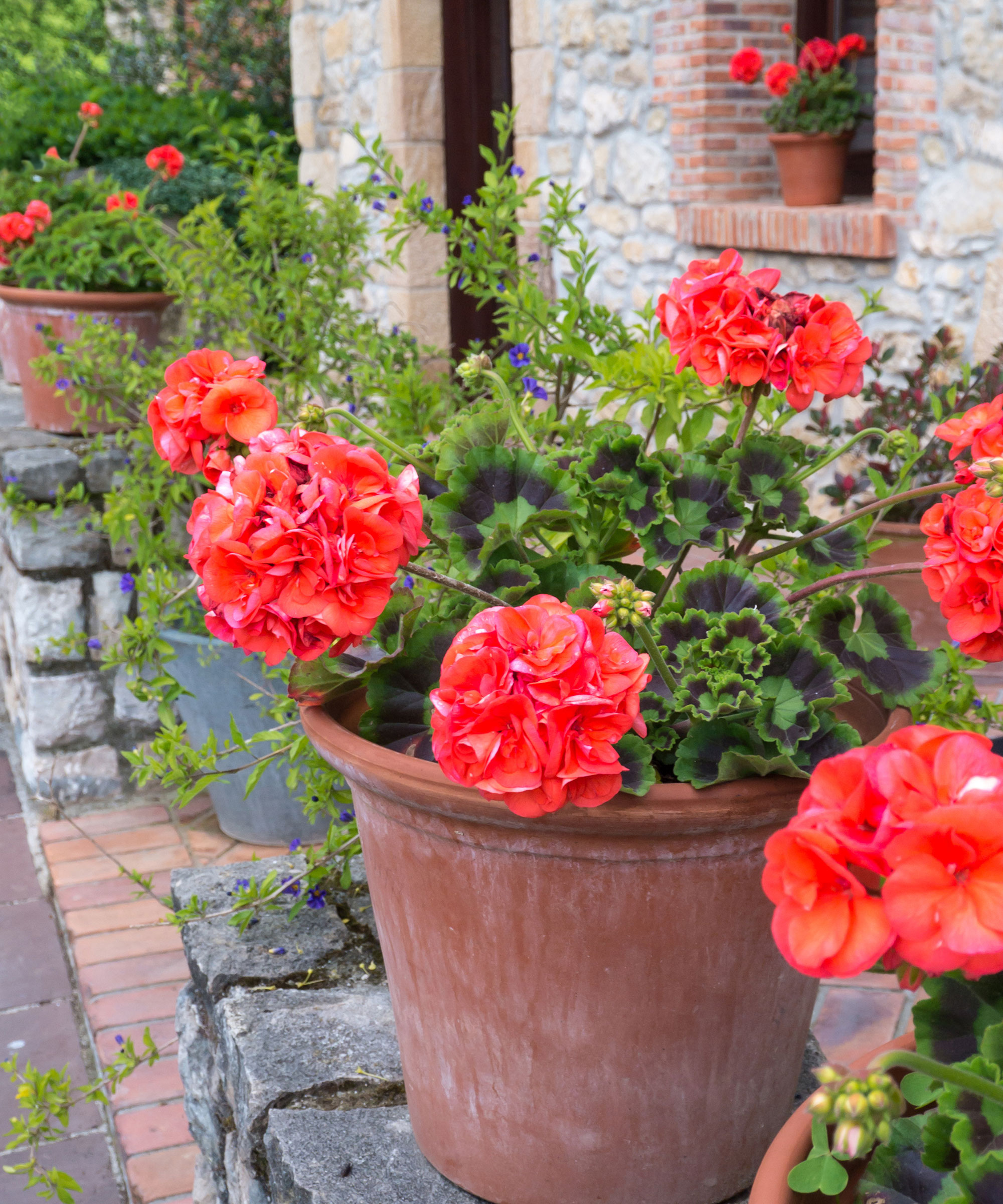
Choosing Containers for Geraniums
Geraniums are some of the best candidates for container gardening, inside and outdoors. They aren't too fussy and there are just a few things to bear in mind. When growing in the ground, geraniums are capable of developing deep roots. Bearing this in mind, they will do best in containers that allow their roots a little room to grow. Alongside this, however, is the paradox that they can often develop the most sustained and prolific displays of flowers in the confines of a relatively narrow space. So when deciding on the best pots for geraniums, it’s a question of balancing these two factors.
There is no specific type of container that's more likely to encourage the fastest growth or the biggest flowers. Geraniums can do equally well in plastic, terracotta, clay or glazed ceramic. However, what is absolutely critical is that your pot has adequate drainage holes for your plants. One of the key reasons geraniums can stop growing or struggle in containers is because they wind up sitting in waterlogged compost, usually due to poor drainage. Facilitate drainage by choosing a light or loamy compost. If your compost is a little on the heavy side, add a bit of coarse sand or perlite.
Gardening tips, videos, info and more delivered right to your inbox!
Sign up for the Gardening Know How newsletter today and receive a free copy of our e-book "How to Grow Delicious Tomatoes".
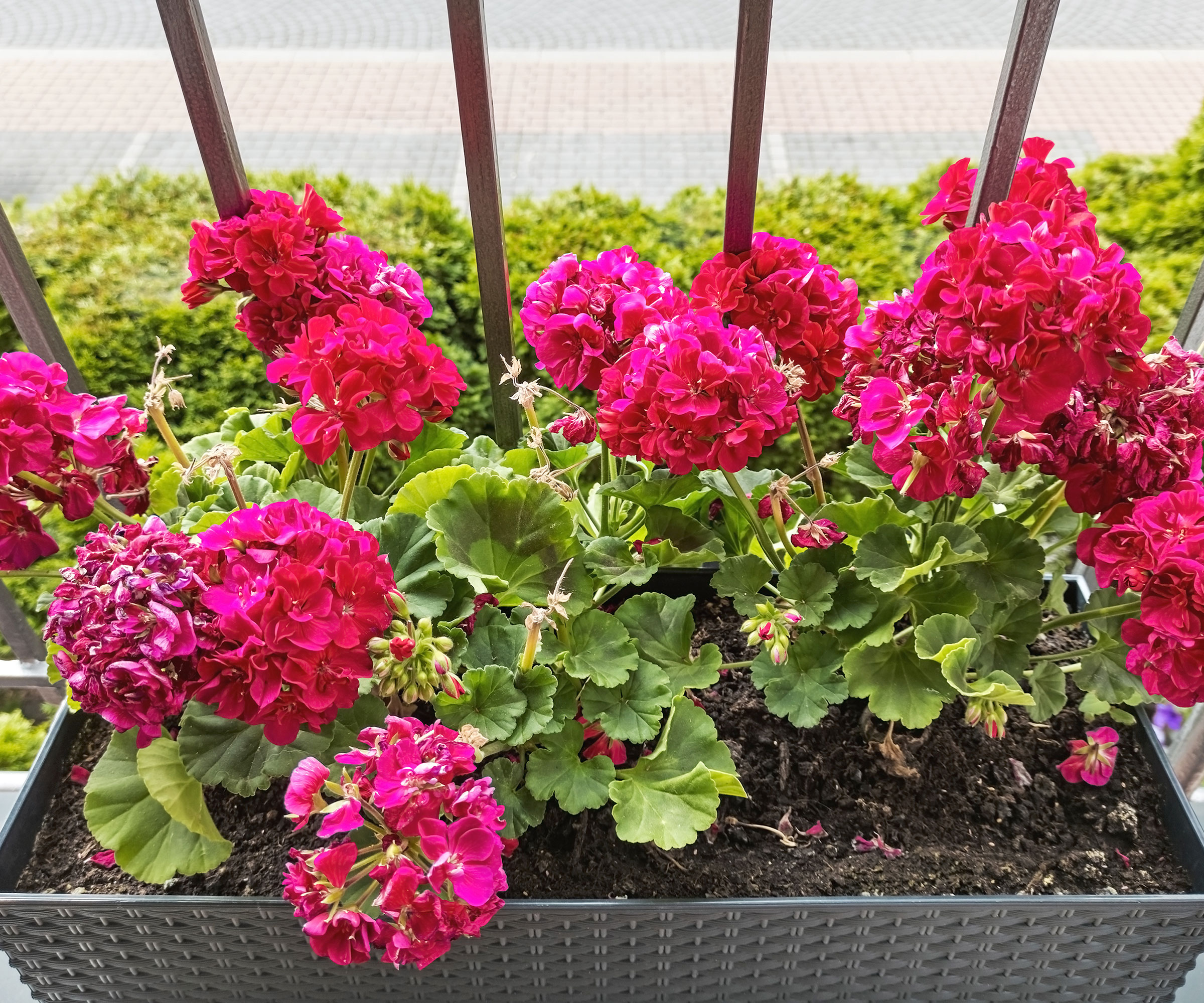
Caring for Geraniums in Containers
Whether you are growing geraniums in containers indoors or outside, there are a few golden rules that determine the strongest roots, bushiest foliage, lushest blooms and headiest fragrances. If you already grow geraniums in the ground outside and just wish to add a few pots to a patio display, the main areas for attention are watering, feeding and light. For indoor-based geraniums, either overwintering or growing as houseplants, you should also keep an eye on room temperature and humidity:
- Lighting Conditions: However you can manage it, try to secure a spot with access to the brightest light. Geraniums are naturally inclined to grow quickly, green up better and flower most generously wherever they can bask in the sun’s rays. For any pot-based plants that have been brought indoors to overwinter, find a window that is south or west facing. If natural light is limited, use a grow light or fluorescent light source for 12-14 hours a day.
- Temperature & Humidity: As we have already pointed out, there is huge breadth in the range of geraniums you can grow in containers. Since many are tender perennials, you’ll need to make sure daytime temperatures never dip below 65-70°F (18-21°C) during the cooler months. At night, aim for 57°F or higher (14°C). If you need to supplement your indoor environment with extra provisions at night, a horticultural fleece could help (just remember to remove it during the day). Humidity is a little trickier: too high and there is the risk of fungal infections, too low and plants might wilt. Aim for a relative 50-70% humidity level, and adjust with pebble trays or by misting as necessary.
- Water & Fertilizer: You’ll be tempted to overcompensate with watering, thinking geraniums need more in pots. Resist this urge as much as you can. Geraniums like compost to dry out a little between watering. As mentioned, these plants hate to have wet feet and may turn up their toes if kept in chilly waterlogged compost. Water deeply once a week in spring, and more often in warmer weather. It’s also smart to add a balanced liquid fertilizer once a month. 'Use a water-soluble houseplant feed or a 5-10-5 mix every four-six weeks over the active growing season,’ says Gardening Know How’s Mary Ellen Ellis.

Mary Ellen Ellis has been gardening for over 20 years. With degrees in chemistry and biology, Mary Ellen's specialties are flowers, native plants, and herbs.
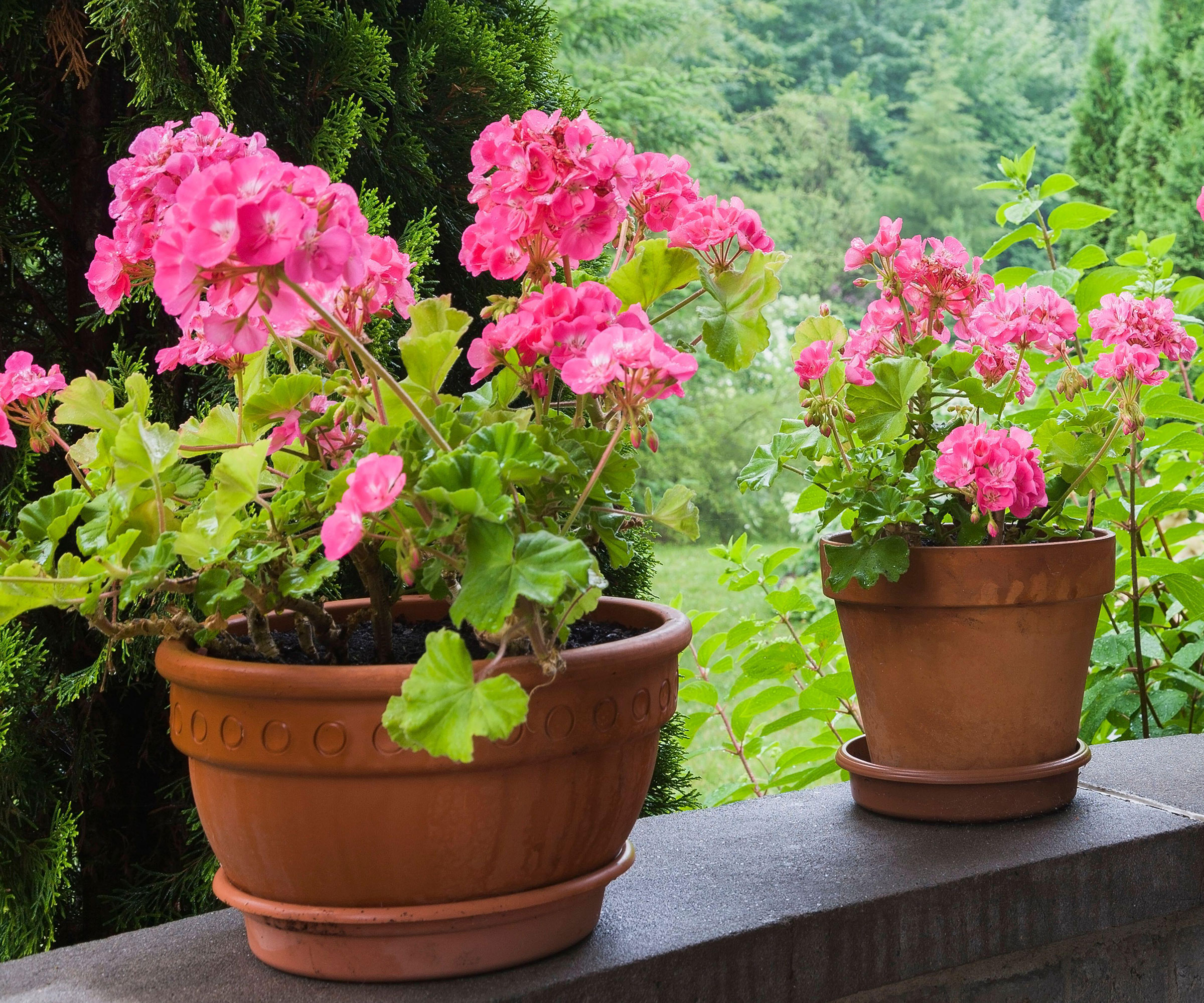
When and How to Plant Geraniums
Knowing how to grow geraniums in pots isn’t just about choosing the best cultivars and containers. You also have decisions to make regarding the way you plant them: by plugs, by seed, or by rooting cuttings. If you are potting geraniums you have purchased as plugs, and you intend to grow more than one plant per pot, allow 8-10in (20-25cm) between each plant. Don’t plant the root ball too deep in the pot, as this can retard plant growth. As for when to plant, wait until the last frosts have passed. You can also plant in the fall, as long as the plants will be kept in a well-regulated area.
- Starting Geraniums from Seed: Growing geraniums in pots from seed will take a long time, and there’s no way around it. However, as long as you can maintain the right temperatures, and as long as you are patient, geranium seed propagation isn’t that tricky. ‘You’ll need 8-10 weeks before the last frost date to get them started,’ says Mary Ellen Ellis. Plant seeds 2-3in (5-8cm) apart and cover with a quarter-inch of compost. Sit the pot in a tray of water, drain, then place in a propagator. Pot on to separate containers when you see the first true leaves.
- Starting Geraniums from Cuttings: You can also start geraniums as cuttings, which is often the best way to guarantee that the offspring grows true to the parent plant. It is also much quicker to grow than a plant started from seed. Take cuttings in summer, selecting 3-5in (8-12cm) lengths of stems. Remove all but the top leaves, then dip in rooting hormone and plant in compost with plenty of sand or vermiculite. You can also root cuttings in water before planting. Space cuttings a few inches apart. ‘Cover the planted cuttings with a plastic bag to regulate moisture levels as the cutting takes root,’ says Gardening Know How’s Tonya Barnett. ‘Cuttings should root in six-eight weeks.’ Repot once fresh leaves appear.

Tonya Barnett has been gardening for 13 years. Flowers are her passion. She has transformed her backyard into a cut flower garden, which she regularly chronicles on her YouTube channel @tonyawiththeflowers.
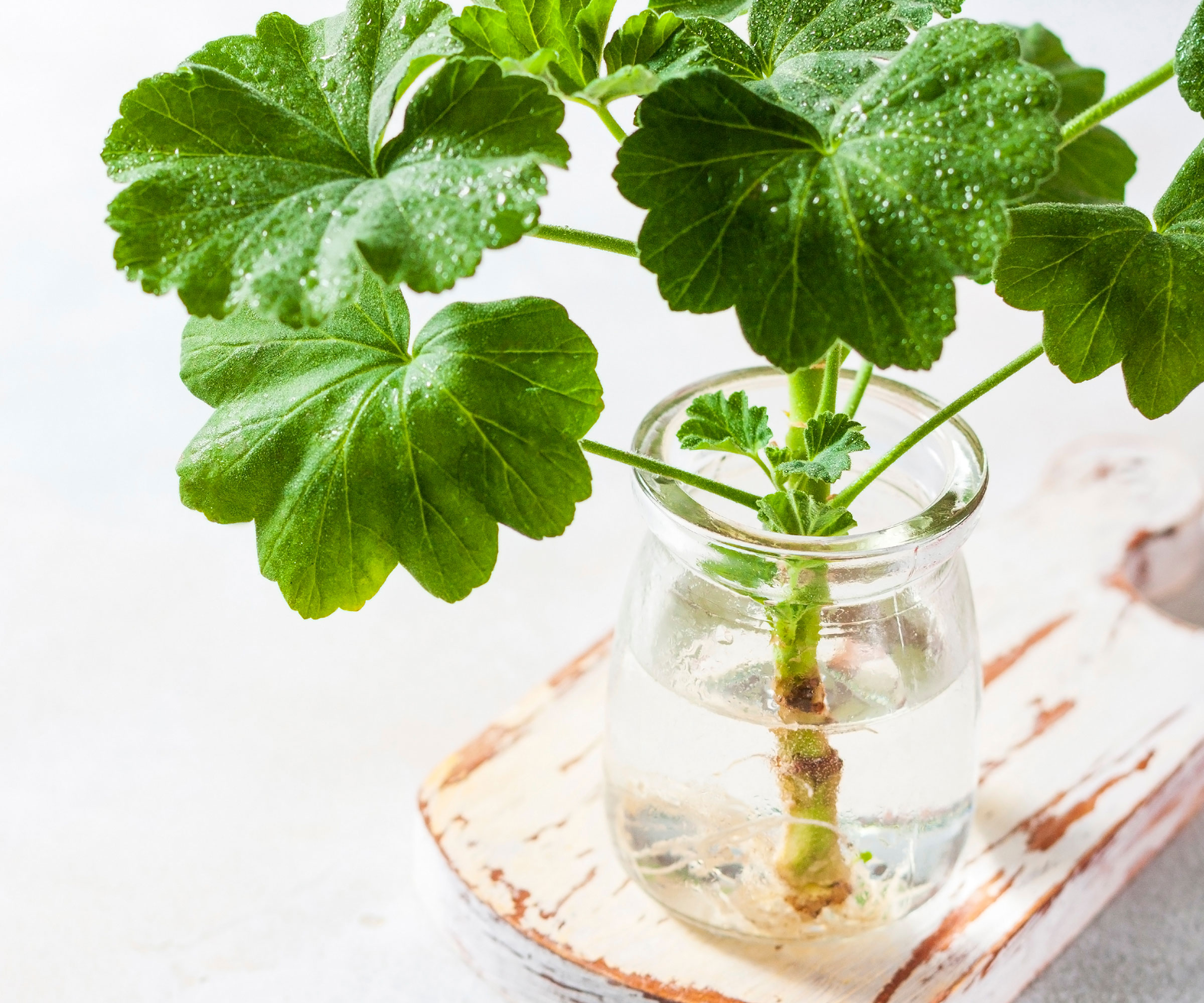
Problems Growing Container Geraniums
As you learn how to care for geraniums in pots and follow the cultivation methods outlined above, you’ll hopefully reduce the risks of problems occurring. Geraniums are relatively low maintenance once established. The main areas where issues can crop up relate to fluctuations in light, watering or airflow. One of the key issues that can crop up involves legginess in plants. This tends to happen where geraniums have been overwatered, or where access to direct sunlight has been reduced or restricted. Overwatering can also lead to yellow leaves in the lower parts of the plant. If this happens, let the compost dry out so the plan can recover.
If you are growing geraniums in containers as houseplants, you may find that some of the same pests crop up. These include whiteflies, aphids and mealybugs. Regulating airflow and humidity levels can reduce the risks, but if you do see aphids, don’t panic. Apply short bursts of water every couple of days to curb the infestations, or add a diluted neem oil spray. Neem oil is also a good remedy for spider mite infestations, which tend to present as webbing and papery-looking leaves.
Another potential issue that might crop up with container-based plants kept in close proximity is geranium leaf rust. This foliar disease presents as small yellow circles on the undersides of leaves. You might then see orangey-brown spores and raised pustules. ‘Spores thrive in cool, damp conditions, and are prevalent in greenhouses,’ says Gardening Know How’s Liz Baessler. ‘Space plants for good airflow, and avoid splashing water on leaves. Remove infected leaves, and apply fungicide to the rest.’

Liz has been with Gardening Know How since 2015, and a Senior Editor since 2020. She holds a BA in English from Brandeis University and an MA in English from the University of Geneva, Switzerland. After years of gardening in community garden plots, she finally has a backyard of her own, which she is filling with vegetables and flowers.
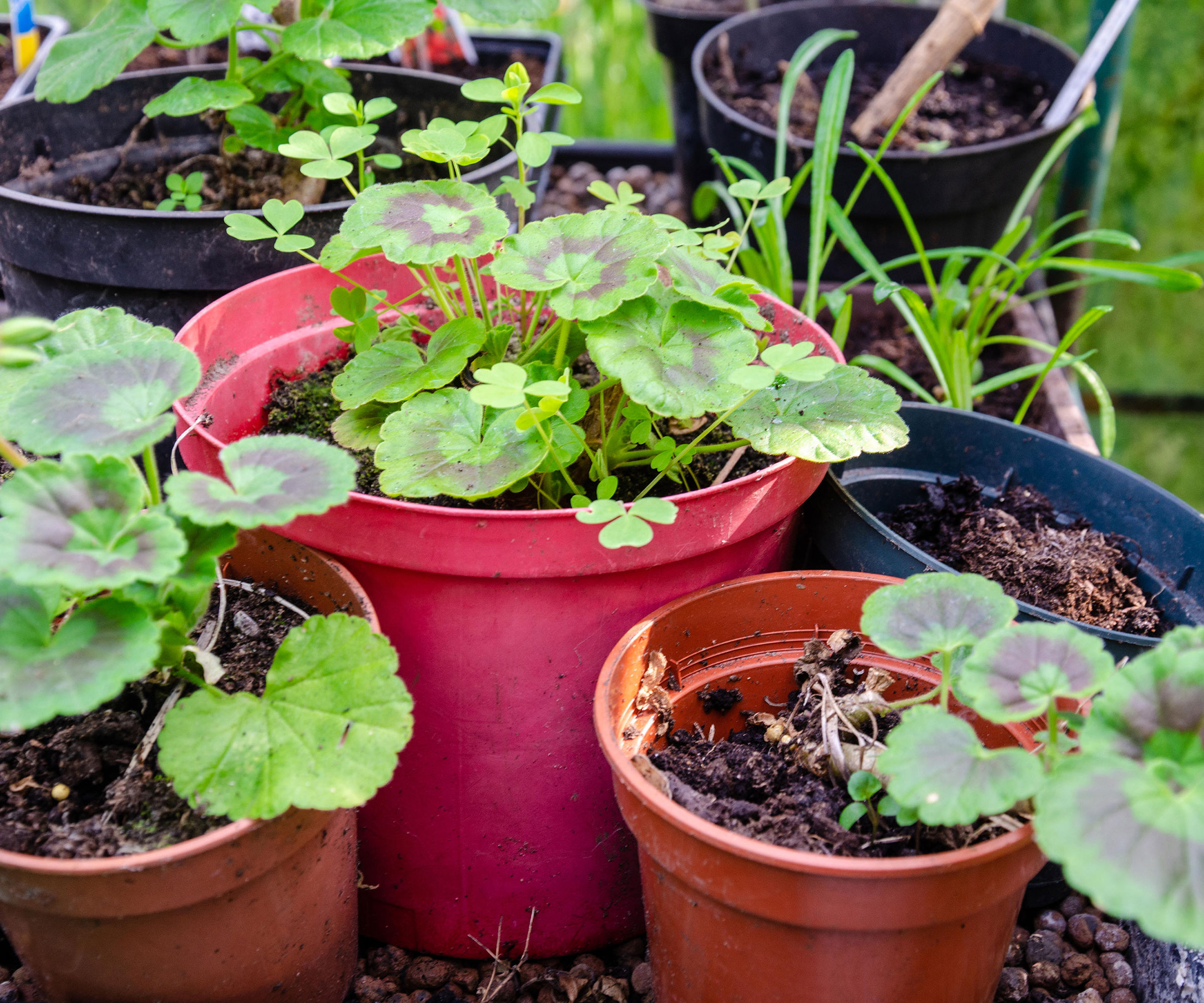
Overwintering, Pruning and Repotting
Extending the life of tender potted geraniums over winter is entirely possible. You just have to decide whether you wish to keep your plant ‘awake’ or allow it to ‘sleep’ through the cooler months. To keep your geranium awake, place it in a bright, sunny position in the home and make sure you lessen your watering routine. While this option is perfectly agreeable to a geranium, you might find the alternative (sleeping) results in a more generous display of flowers the following season.
‘Sleep mode’ basically means you allow your potted geranium to become dormant. Yes, that’s right: knowing how to grow geraniums in containers is sometimes about knowing when to do nothing at all. All you have to do is place the potted geranium in a cool, dark place that won’t be exposed to frosts. Allow foliage and stem tips to shrivel and fall off. Compost needs to be just barely moist. You can leave potted geraniums this way until spring, when you can slowly introduce sunlight and warmth and resume more regular watering. ‘With the proper care in winter, you can help tender perennials survive the coolest months of the year – even outside their hardiness range,’ says Tonya Barnett.
In terms of general plant care, you may also wish to consider pruning and repotting. You won’t need to do much in the way of pruning. It’s mainly just a case of knowing how to deadhead geraniums in pots. During the flowering season, simply deadhead spent flowers to promote fresh growth. A light pruning after flowering (in the fall) is also beneficial. Pinching back a few growing tips (and leggy stems at the onset of the growing season) are also good ways to encourage a fuller, healthier plant. Hopefully, you should only need to repot every couple of years, and only then if you think compost has dried out severely or the plant itself has become pot-bound.
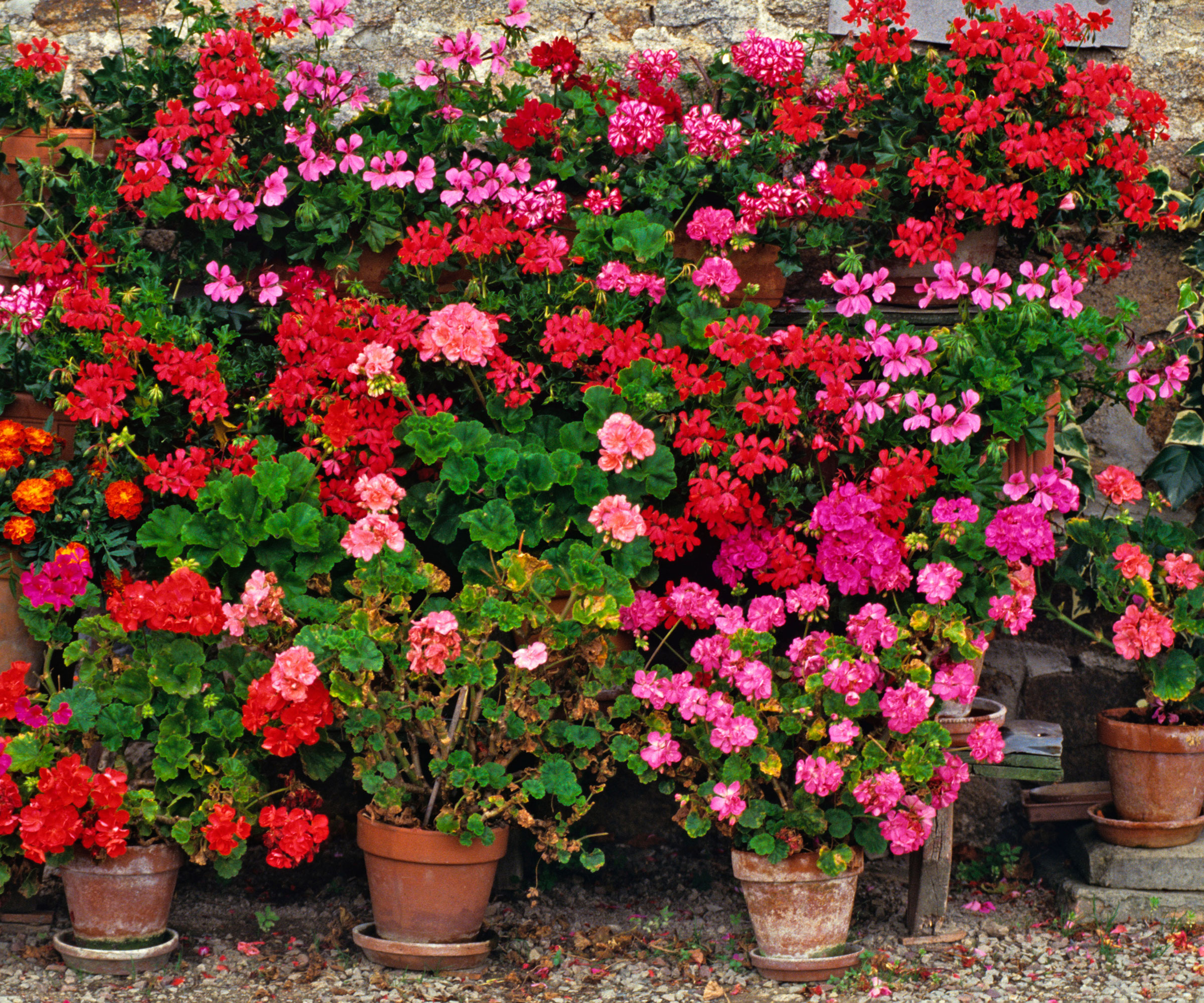
Frequently Asked Questions
Do Geraniums in Pots Need More Sun?
Geraniums are bona fide sun-worshippers and that doesn’t change just because they are in containers. However, there is a balance to strike between the sunlight they crave and extremes of temperature that can lead to their undoing. So while they enjoy full sun every day, they also appreciate a little filtered or dappled sunlight in summer months, ideally in the afternoon. Placing potted geraniums in an east-facing window or garden spot in summer means they are less likely to wilt in midday heat. Outside of hotter summer weeks, give them as much sun as you can.
How Do You Keep Potted Geraniums Blooming?
Container-based geraniums have the same basic flowering needs as ground-based counterparts. You just have to keep a closer eye on water levels with potted geraniums, since they tend to go into ‘shutdown’ mode if left sitting in soggy compost too long. To ensure better blooms for longer, make sure containers are well draining. Direct sunlight also affects flowering momentum, so give container geraniums at least six hours a day. A monthly balanced fertilizer can give plants a boost during the flowering season. Make sure it isn’t too high in nitrogen, though, as this prompts more foliage and fewer flowers.
Do Coffee Grounds Help Geraniums Grow?
Coffee grounds (specifically the fresh kind) have been known to help certain garden shrubs and plants, particularly acid-loving ornamentals such as azaleas, hydrangeas and rhododendrons, and cropping plants like blueberries. However, because fresh coffee grounds would effectively lower the pH of any potting mix, they are not advised for container-based plants. As a general rule, geraniums prefer a pH in the range of 6-7 (only slightly acidic or neutral).

Janey is a former assistant editor of the UK’s oldest gardening magazine, Amateur Gardening, where she worked for five years. For the last few years, she has also been writing and editing content for digital gardening brands GardeningEtc and Homes & Gardens. She’s taken part in a range of conservation and rewilding projects for the Royal Horticultural Society (RHS) and the British Trust for Conservation Volunteers (BTCV) as a way of exploring her horticultural horizons. She is currently undertaking her RHS Level 2 certificate in The Principles of Plant Growth and Development.
-
 Get Ready For A Summer Of Hummers! Grow These Full Sun Hummingbird Plants and Flowers
Get Ready For A Summer Of Hummers! Grow These Full Sun Hummingbird Plants and FlowersIf you’re lucky enough to enjoy a sunny backyard, make sure you are maxing out on your pollinator opportunities and grow these full sun hummingbird plants and flowers
By Tonya Barnett
-
 12 Lush Alternatives To A Lawn For Sustainable Spaces
12 Lush Alternatives To A Lawn For Sustainable SpacesAlternatives to a lawn are beautiful and also beneficial to your local ecosystem and its pollinators. Explore our top picks for plants to replace grass.
By Tonya Barnett
-
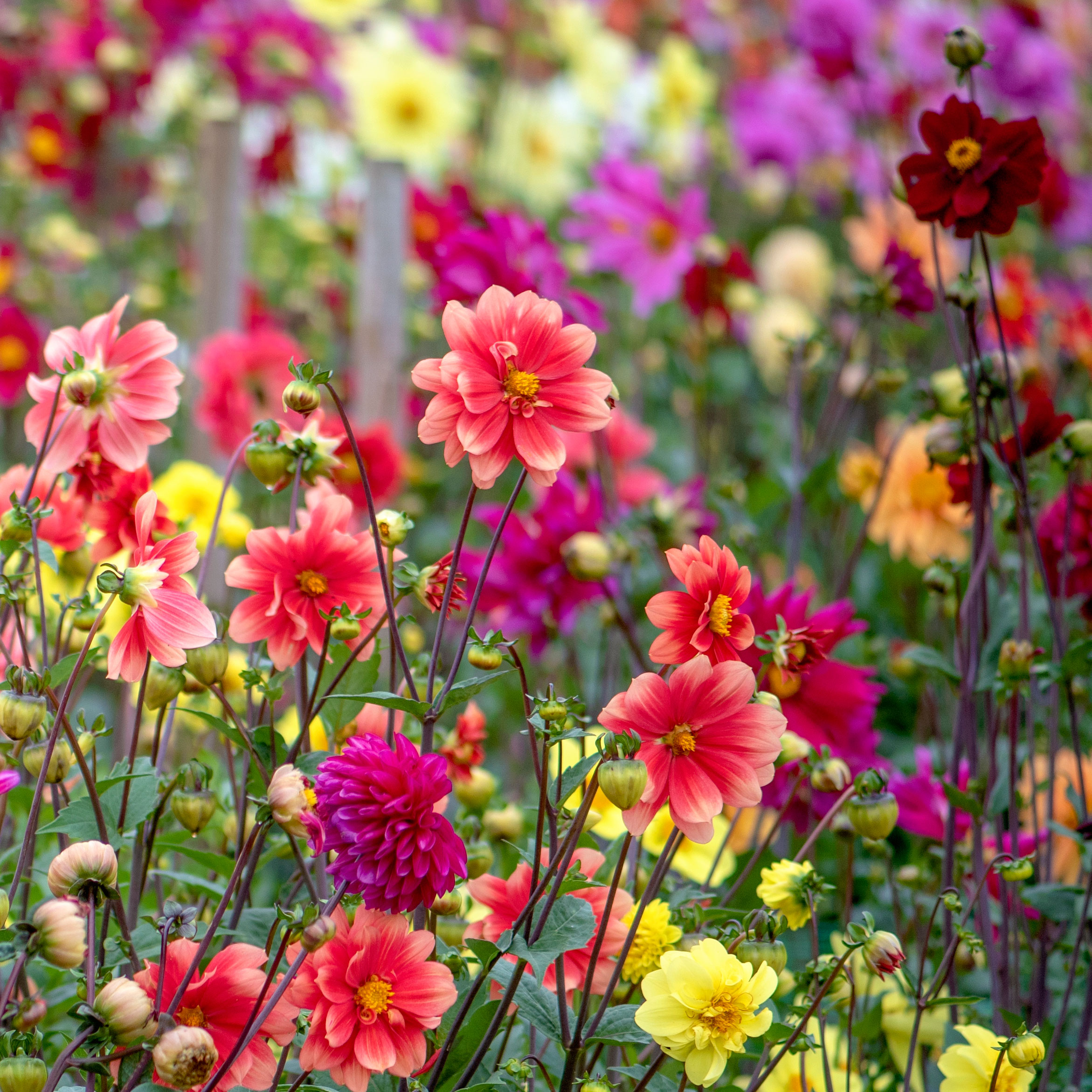 Cut Flower Garden For Beginners: 8 Easy Decorative Floral Plants For Newbies To Grow
Cut Flower Garden For Beginners: 8 Easy Decorative Floral Plants For Newbies To GrowAre you new to growing decorative florals for bouquets and ornamental displays? A cut flower garden for beginners is well within reach if you grow these flower seeds
By Tonya Barnett
-
 Spectacular Early Blooming Shrubs: 6 Sparkling Spring Flowering Bushes
Spectacular Early Blooming Shrubs: 6 Sparkling Spring Flowering BushesWant to kickstart your gardening year with dazzling spring flowering bushes for beds and borders? These unique early bloomers are sure to help you rise and shine!
By Teo Spengler
-
 Quick Fire Hydrangea – The Elegant, Easy-Care Shrub Every Gardener Needs In Their Landscape
Quick Fire Hydrangea – The Elegant, Easy-Care Shrub Every Gardener Needs In Their LandscapeIf you’re after an early flowering panicle hydrangea that offers plenty of floral variety, the Quick Fire hydrangea goes big on visual dynamics from early summer to fall
By Tonya Barnett
-
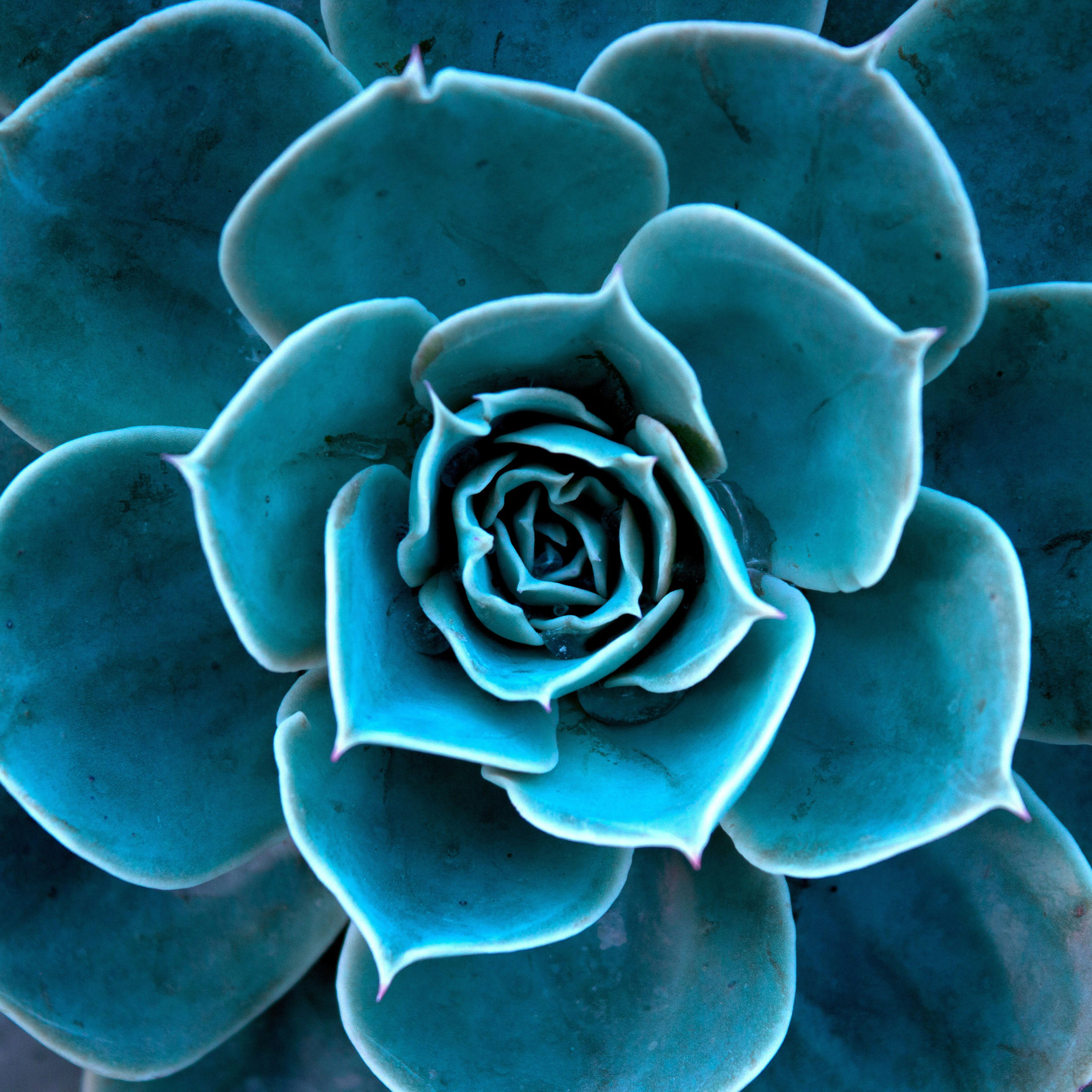 Time For Teal: 7 Terrific Teal Plants To Grow In Your Home Garden
Time For Teal: 7 Terrific Teal Plants To Grow In Your Home GardenIt’s an emerging color with a devoted following in fashion and interiors, but can you enjoy blue-greens in your garden? We round up the best teal plants you can grow
By Tonya Barnett
-
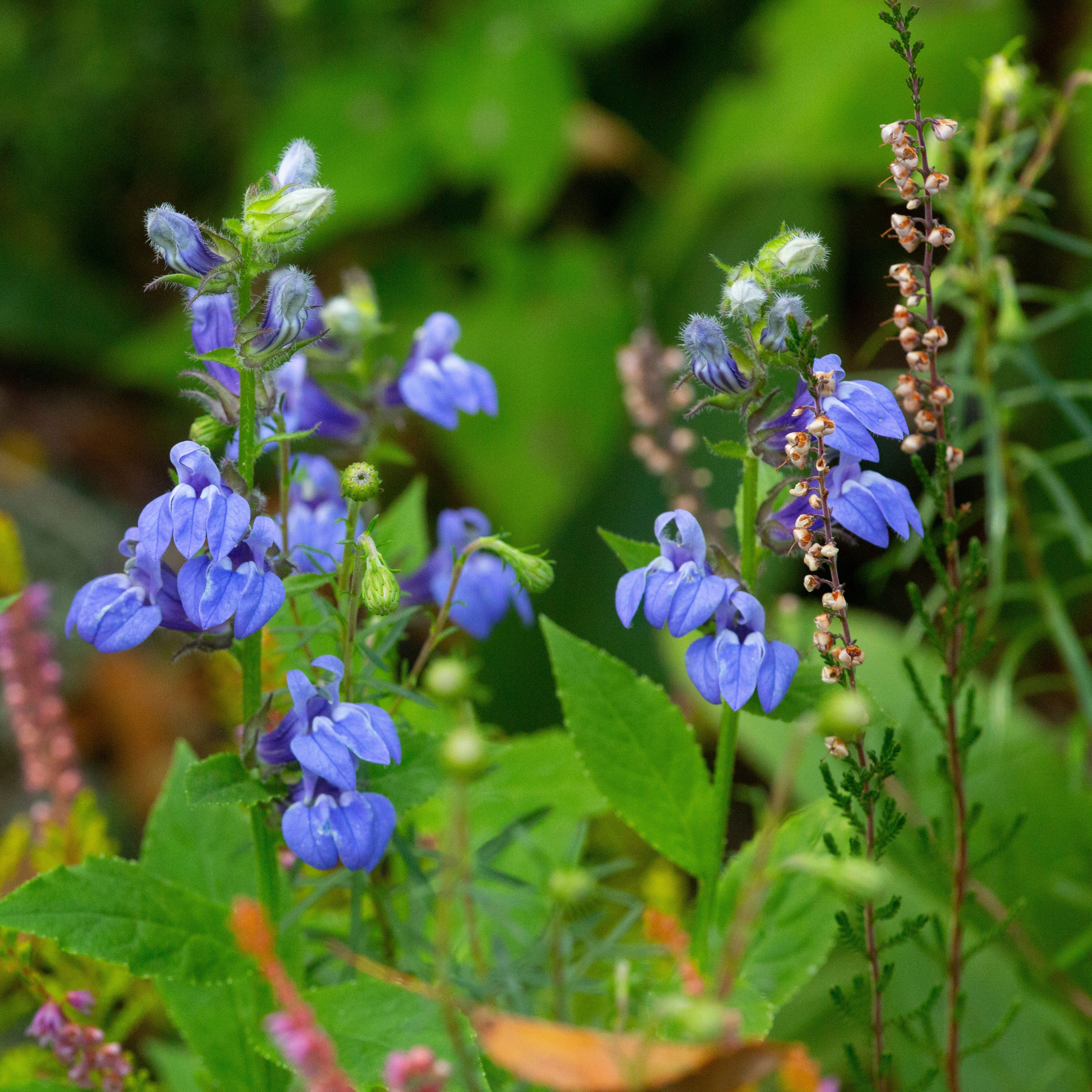 Grow Great Blue Lobelia: Native Blue Cardinal Flowers For Butterflies And Hummingbirds
Grow Great Blue Lobelia: Native Blue Cardinal Flowers For Butterflies And HummingbirdsIf you’re keen to enhance your native plants or attract more pollinators, blue cardinal flowers are an essential flowering perennial. Here’s how to grow great blue lobelia
By Tonya Barnett
-
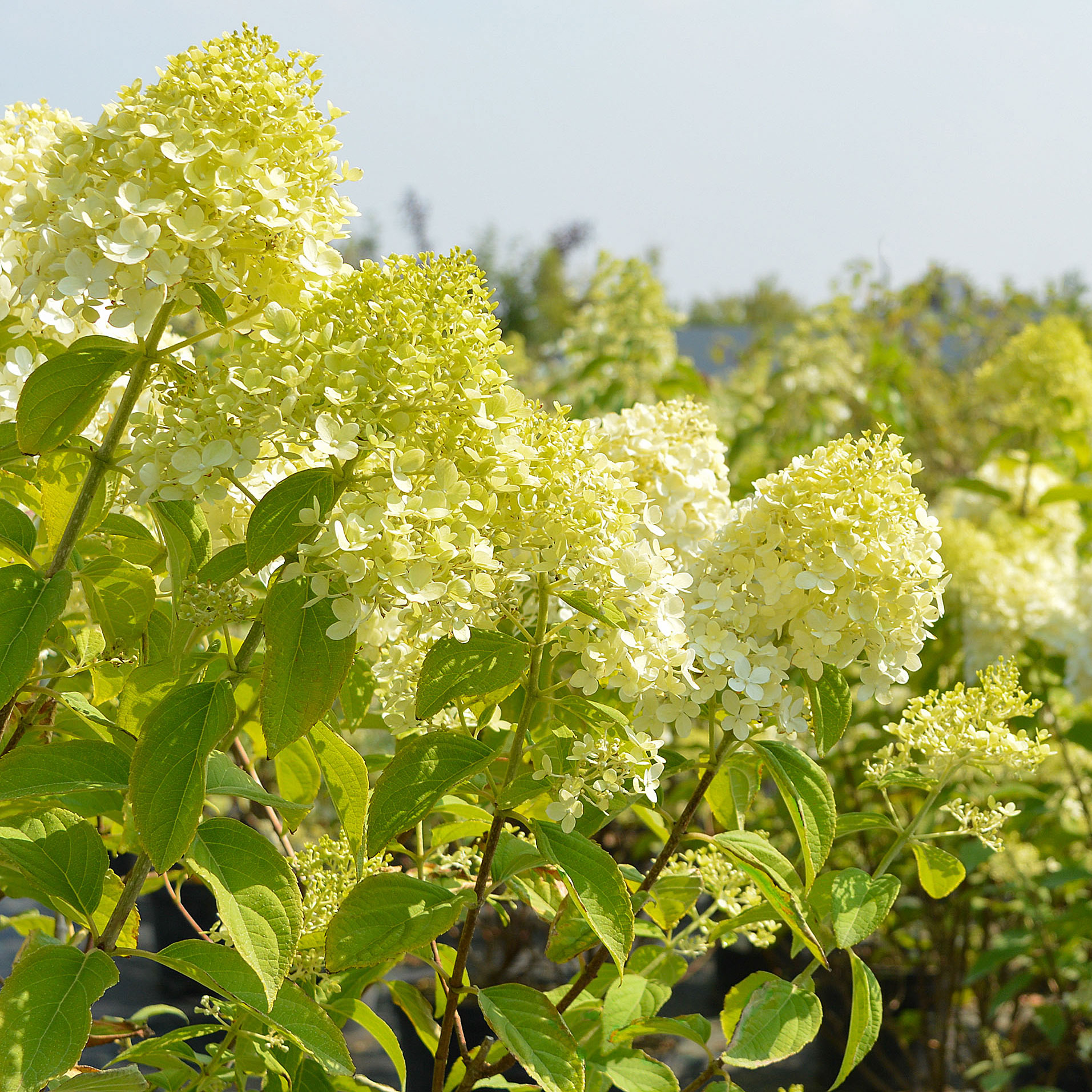 Grow Limelight Hydrangea Shrubs For Green Themed Displays And Brilliant Borders
Grow Limelight Hydrangea Shrubs For Green Themed Displays And Brilliant BordersIf you're a panicle hydrangea lover in search of flamboyant, long-lasting florals, knowing how to grow Limelight hydrangea shrubs will ensure gorgeous green blooms
By Mary Ellen Ellis
-
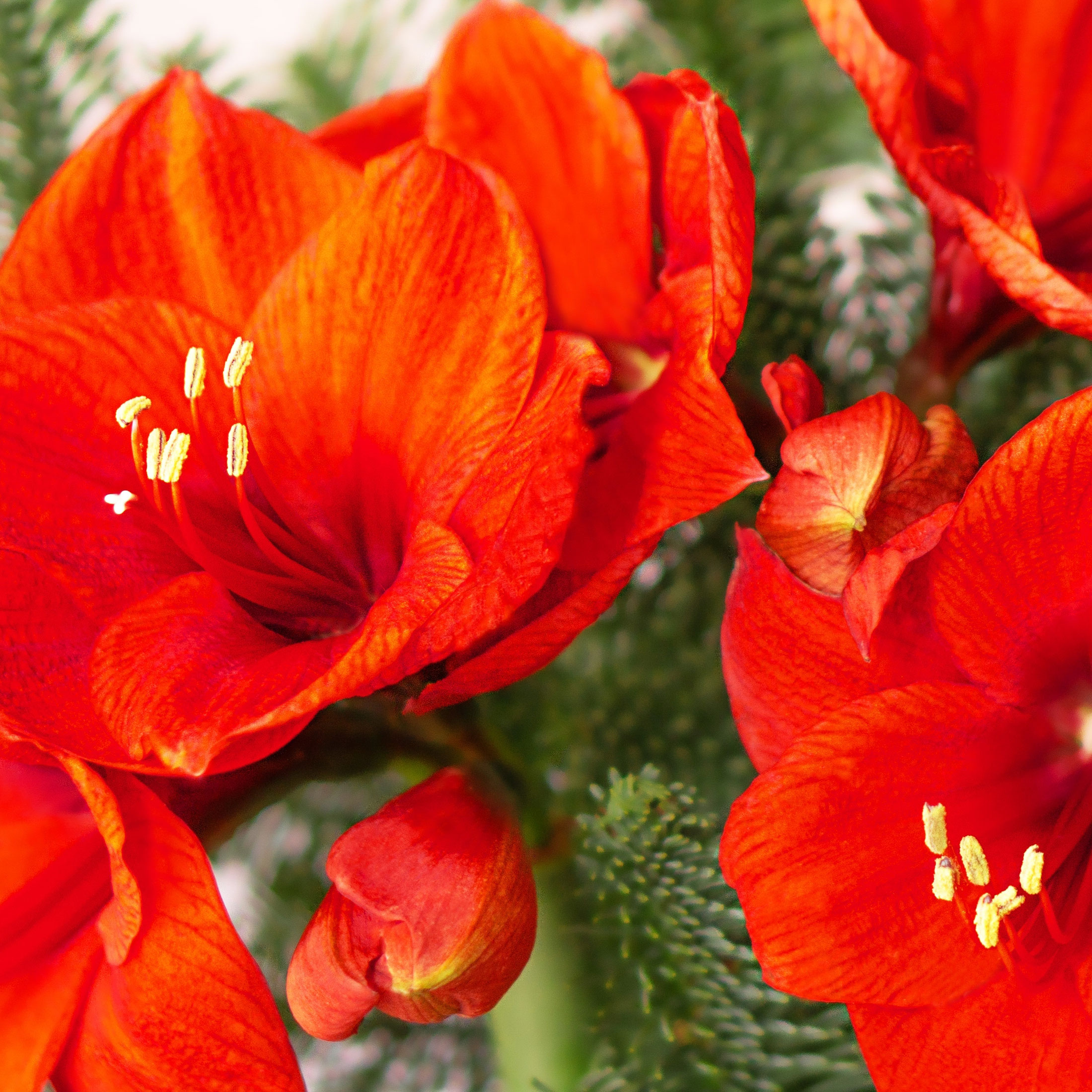 Warm Up Your Winter With Indoor Reds! 8 Red Amaryllis Varieties For Sizzling Seasonal Interest
Warm Up Your Winter With Indoor Reds! 8 Red Amaryllis Varieties For Sizzling Seasonal InterestWell loved as a bold decorative holiday bloomer, the red amaryllis is a hot favorite for winter displays. These red amaryllis varieties are guaranteed to fire up the season
By Tonya Barnett
-
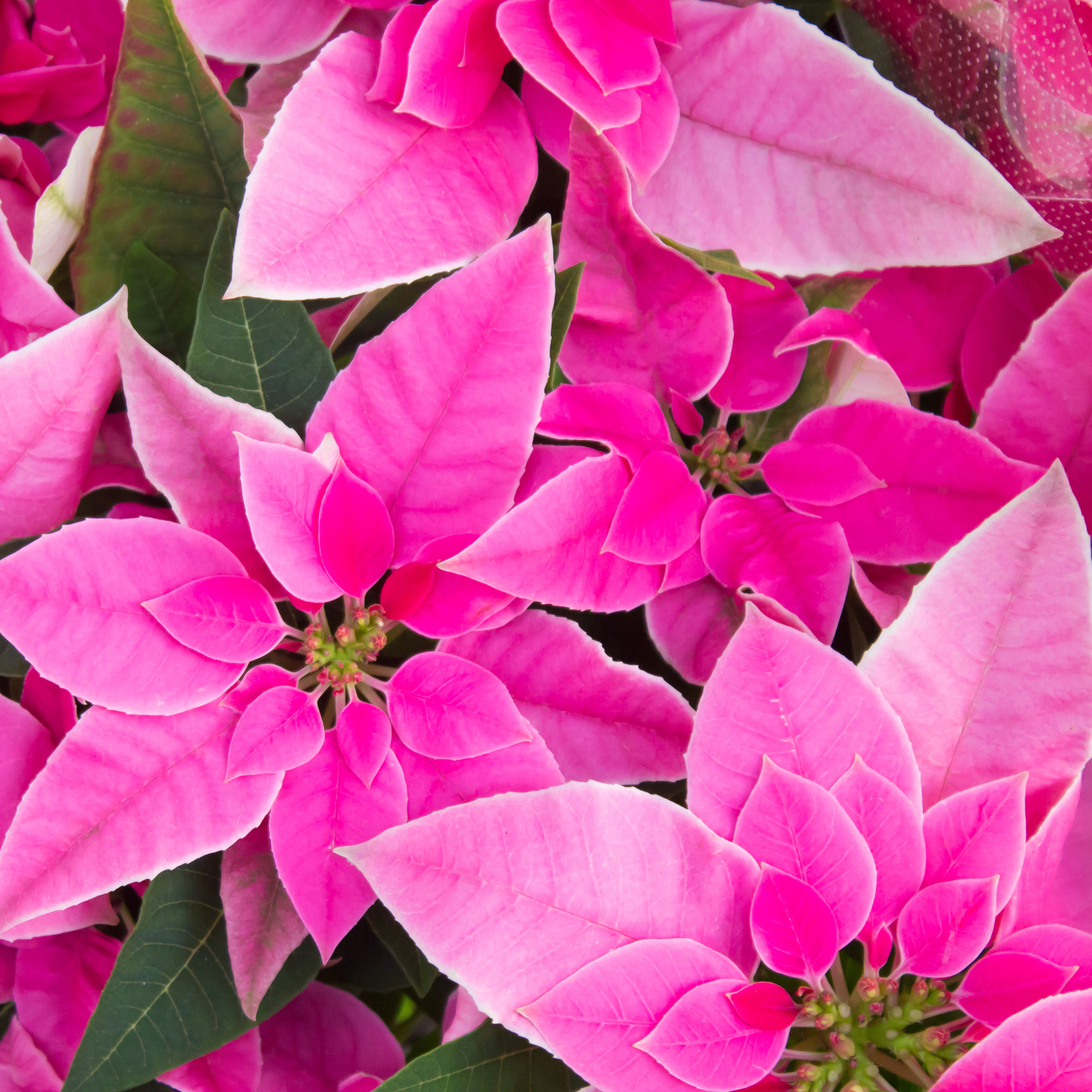 Poinsettia Pinks: 7 Pink Poinsettias To Grow For Neon Hot Tones And Cool Pretty Pastels
Poinsettia Pinks: 7 Pink Poinsettias To Grow For Neon Hot Tones And Cool Pretty PastelsWhile the traditional red poinsettia is a staple of many homes over the holiday period, they are not your only option. For cheerful brights or pastels, why not grow pink poinsettias?
By Tonya Barnett